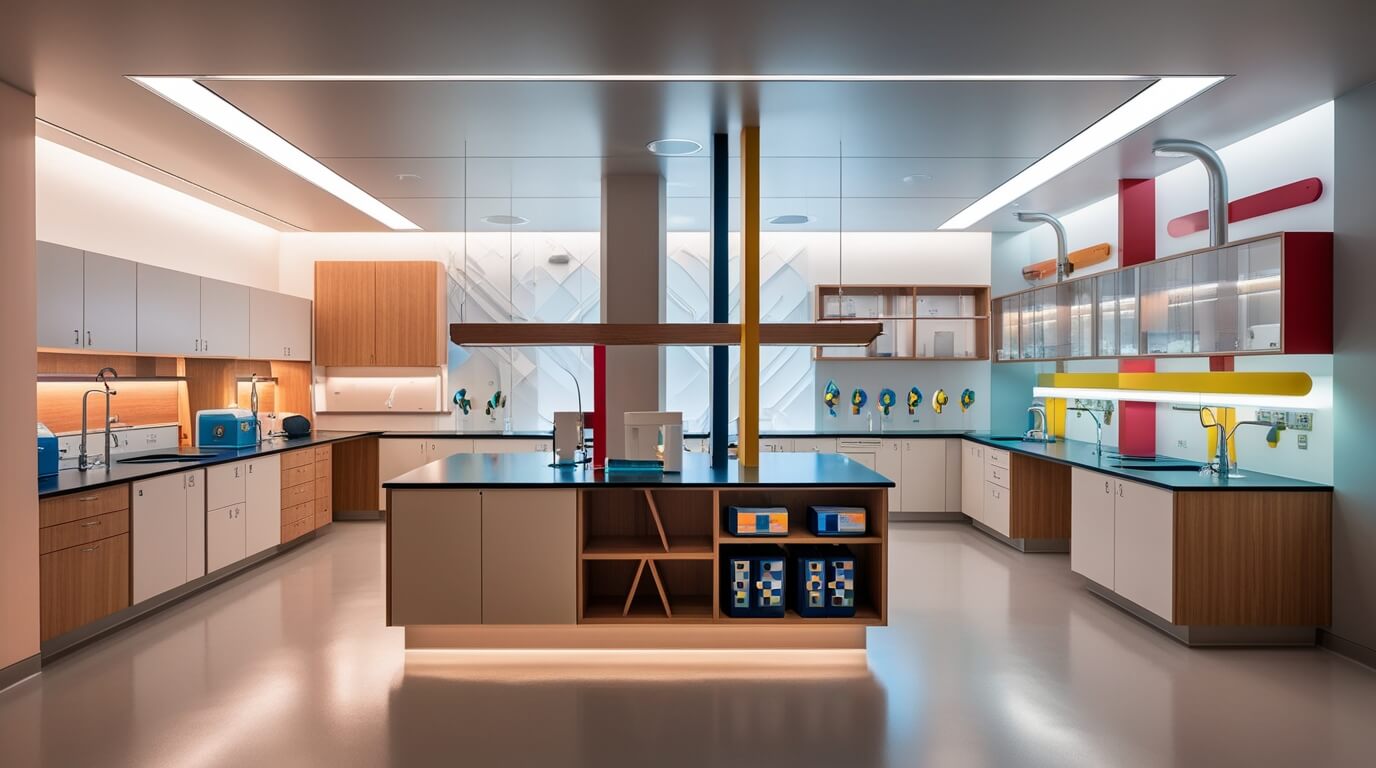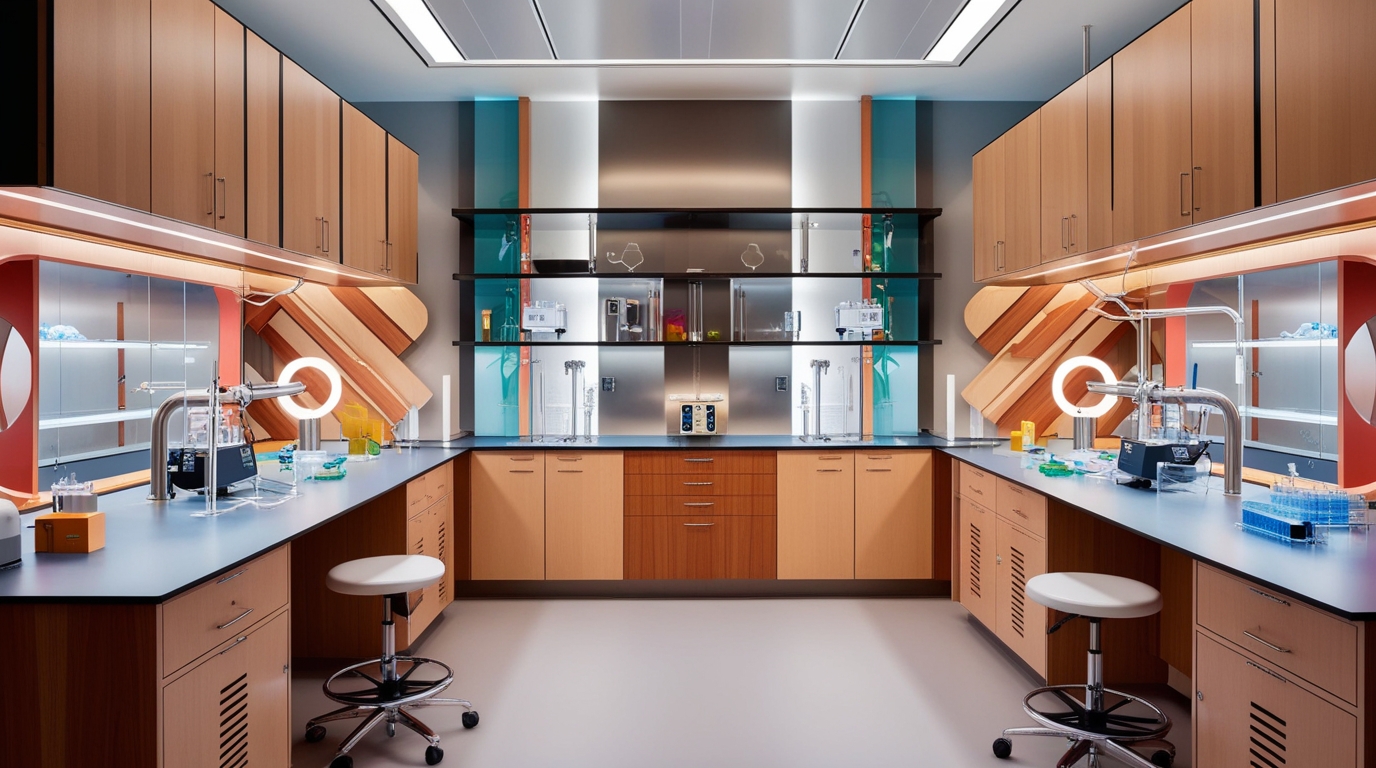Choosing the right laboratory furniture is one of the most critical decisions when setting up a laboratory. The materials used for lab benches, cabinets, and workstations must withstand harsh chemicals, heavy equipment, and frequent use. The right choice ensures durability, safety, and efficiency, while the wrong material could lead to costly repairs or replacements. So, which material is truly the best for lab furniture? Let’s dive into the most common options and their benefits.
1- Stainless Steel
Stainless steel is often the first choice for many laboratories, especially those dealing with corrosive chemicals or biological materials. It offers exceptional resistance to rust, corrosion, and bacterial contamination. Stainless steel furniture is easy to clean and sanitize, making it ideal for pharmaceutical labs, research facilities, and cleanrooms.
Advantages:
- Highly resistant to chemical spills and heat
- Durable and long-lasting
- Non-porous, preventing bacterial growth
Disadvantages:
- Expensive compared to other materials
- Can be prone to scratches and dents over time
For labs that prioritize hygiene and chemical resistance, stainless steel is a top-notch material for laboratory furniture.
2- Phenolic Resin
Phenolic resin is another popular material for lab furniture, particularly for countertops and work surfaces. It is manufactured by layering paper fibers soaked in phenolic resin under high pressure and temperature, creating a hard, durable surface.
Advantages:
- Excellent chemical and moisture resistance
- Lightweight compared to epoxy resin
- More affordable than stainless steel
Disadvantages:
- Limited resistance to very high temperatures
- May not be as durable as epoxy resin in extremely harsh environments
Phenolic resin is often used in school labs, industrial testing labs, and healthcare settings due to its affordability and resistance to a wide range of chemicals.

3- Epoxy Resin
When you need the ultimate durability, epoxy resin is hard to beat. Epoxy resin countertops are created by mixing and curing a combination of resin and hardeners, resulting in a solid, monolithic surface.
Advantages:
- Highly resistant to heat, chemicals, and mechanical wear
- Long lifespan even in the harshest lab conditions
- Non-porous and easy to maintain
Disadvantages:
- Heavy and difficult to install
- Higher upfront cost
Epoxy resin is the gold standard for heavy-duty laboratories, including those in chemical research, pharmaceutical manufacturing, and biotech industries.
4- High-Pressure Laminate (HPL)
High-pressure laminate is a budget-friendly material option for laboratory furniture, often used in educational institutions or low-risk environments.
Advantages:
- Wide variety of colors and patterns
- Affordable and lightweight
- Easy to install and replace
Disadvantages:
- Lower resistance to harsh chemicals and heat
- Susceptible to moisture damage over time
While not suitable for every type of lab, HPL can be a smart choice for general-purpose lab spaces where heavy chemical use is not expected.
5- Polypropylene
Polypropylene is a plastic material used in some specialty lab furniture, particularly where extreme chemical resistance is necessary.
Advantages:
- Outstanding resistance to aggressive chemicals
- Non-corrosive and lightweight
- Easy to clean
Disadvantages:
- Limited strength compared to metals or resins
- Higher material cost for specific designs
Polypropylene furniture is often found in wet labs, chemical testing labs, and environments where acid exposure is common.
Conclusion: Which Material is Best?
The best material for your laboratory furniture depends on your specific needs:
- For maximum chemical and heat resistance, epoxy resin is the top choice.
- For a hygienic and corrosion-resistant environment, stainless steel is ideal.
- For cost-effective chemical resistance, phenolic resin offers a great balance.
- For budget-conscious educational labs, HPL is sufficient.
- For specialized chemical labs, polypropylene provides unbeatable chemical protection.
Ultimately, considering the type of research, chemicals used, budget, and maintenance needs will guide you to the right material. Investing in high-quality laboratory furniture not only enhances the safety and functionality of your lab but also ensures long-term performance and value.


